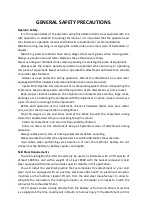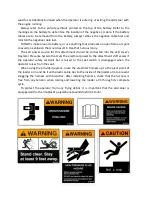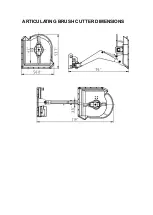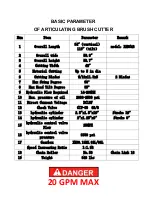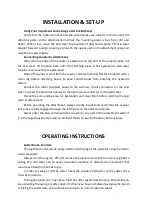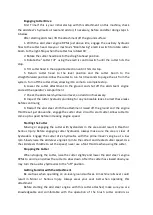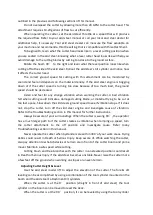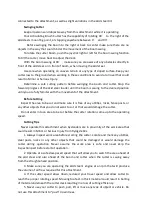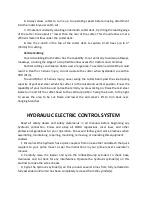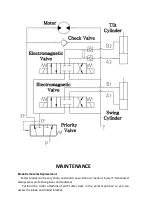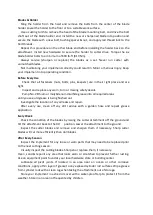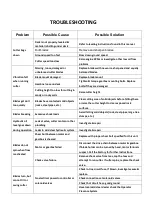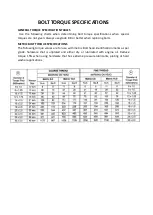
6. Always allow cutter to come up to operating speed before moving attachment
into the material you want to cut.
7. If material constantly is balling underneath cutter deck, try tilting the leading edge
of the cutter to be about 1" lower than the rear of the cutter. This should allow a more
efficient material flow under the cutter deck.
8. Use the v-notch in the top of the cutter deck to capture small trees (up to 3"
(76mm) for cutting.
Vertical Cutting
Your Articulating Brush Cutter has the capability to cut vertically to widen pathways,
roadways, or along the edge of a crop field to allow access for tractors and combines.
Vertical cutting can disperse debris over a large area. To avoid an accident that could
result in Death or Serious Injury, do not operate the cutter when bystanders are within
300' (91m).
To avoid Minor or Serious Injury, never swing the cutter boom past the side tipping
capacity of your skid steer when the cutter is in the raised and vertical position. Know the
capability of your machine and notice the terrain you are working on. Raise the skid steer
loader arm and tilt the cutter head to the vertical position. Swing the boom to the right
to access the area to be cut. Raise and lower the skid steer's lift to trim back over-
hanging branches.
HYDRAULIC ELECTRIC CONTROL SYSTEM
Read all safety decals and safety statements in all manuals before beginning any
hydraulic connection. Know and obey all OSHA regulations, local laws, and other
professional guidelines for your operation. Know and follow good work practices when
assembling, maintaining, repairing, mounting, removing, or operating this equipment.
Loaders
1. Disconnect the hydraulic hose quick couplers from one another and attach the quick
couplers to your prime mover as per the instructions in your prime mover's operator's
manual.
2. Carefully raise the loader and cycle the rollback/dump cylinders to check hose
clearances and to check for any interference. Operate the hydraulic cylinder(s) on this
product to make the same checks.
3. Cycle the hydraulic cylinder(s) on this product several times from fully retracted to
fully extended until all air has been completely removed from the cylinder(s).


